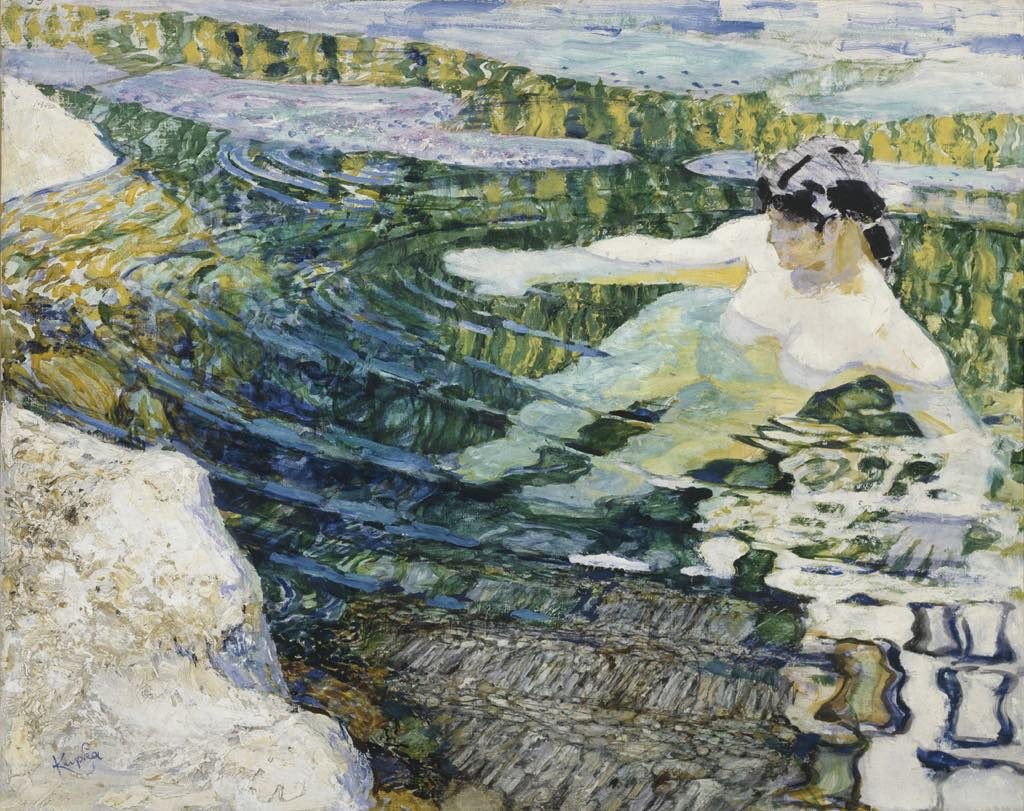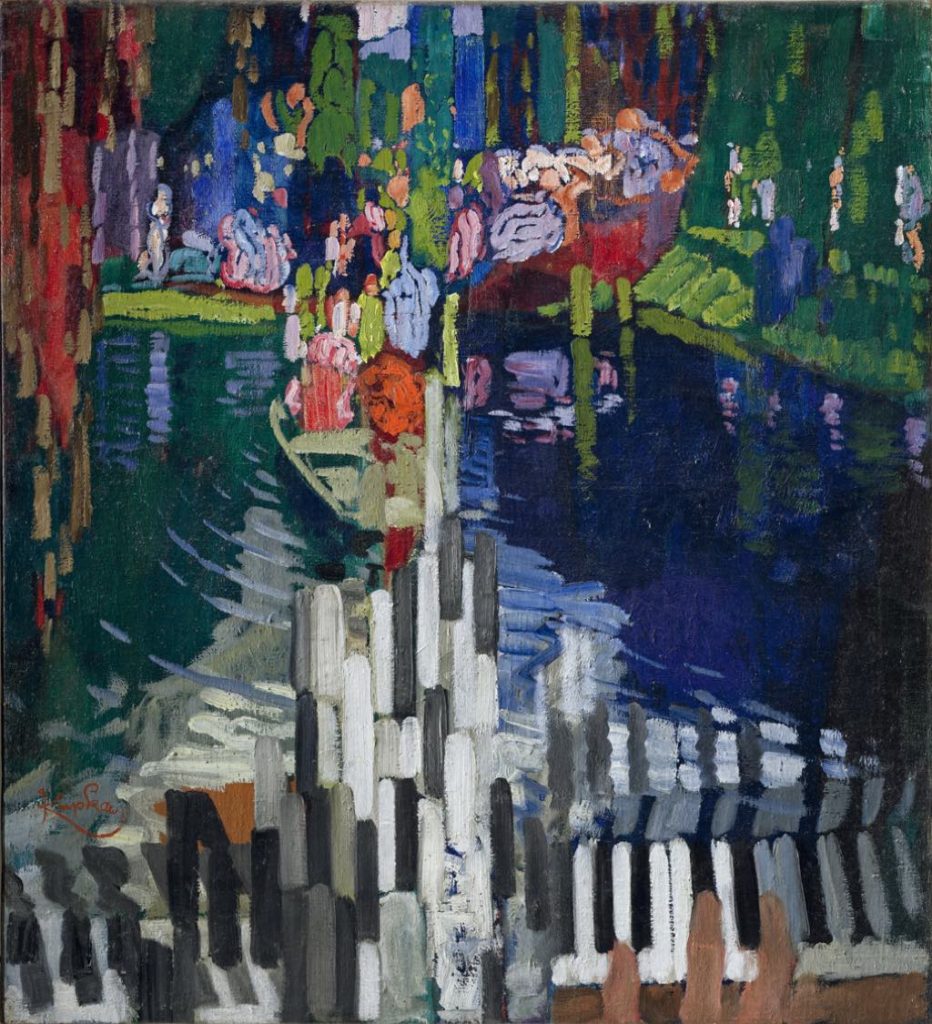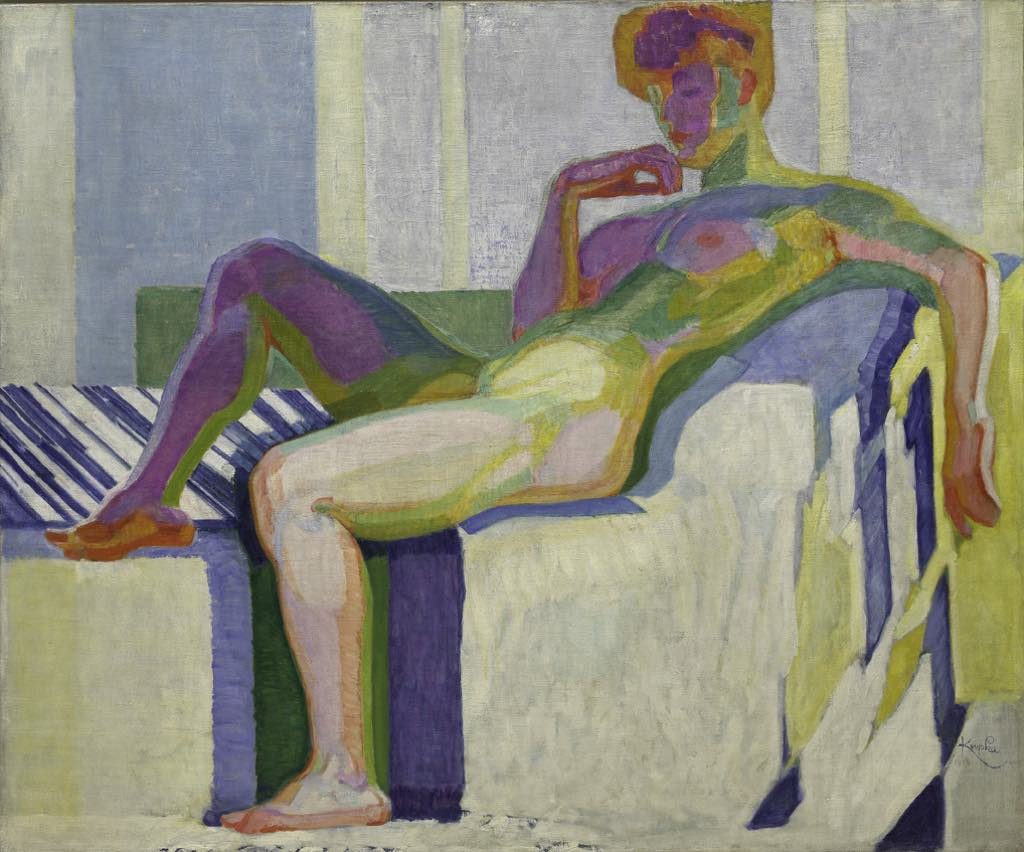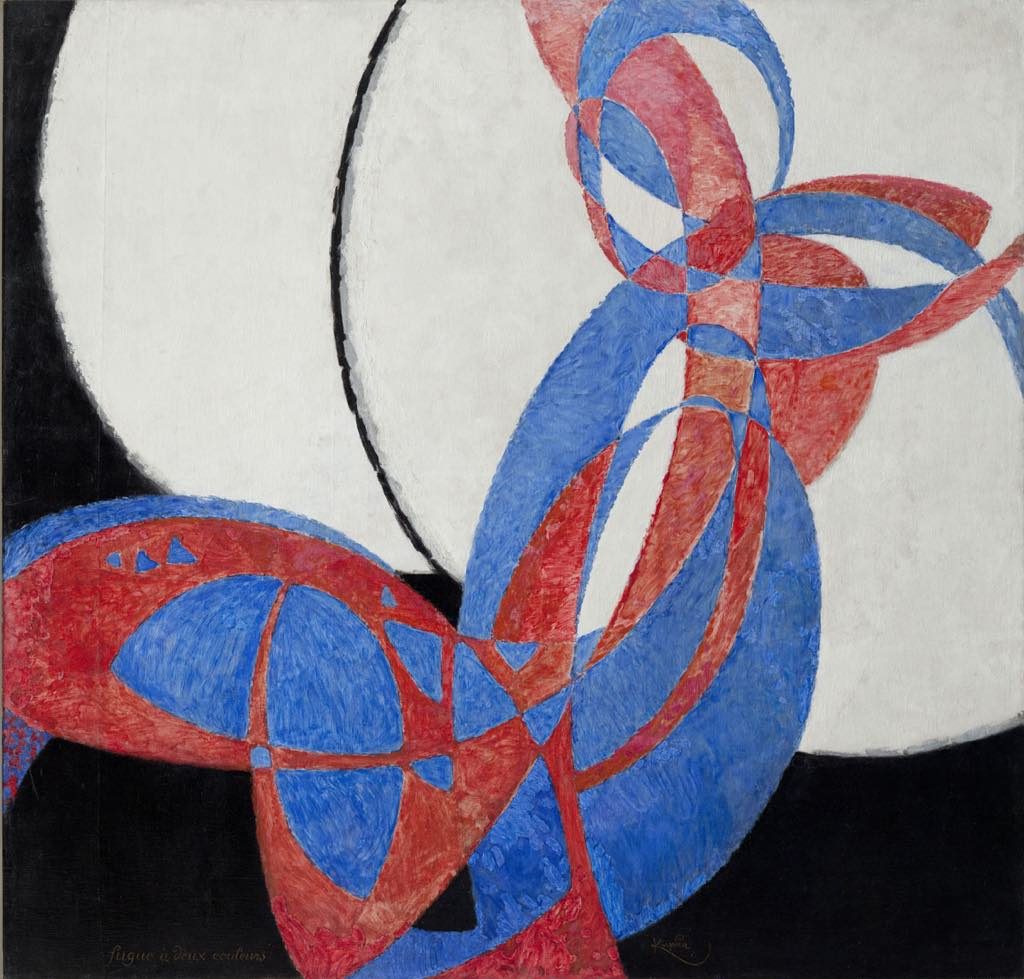
The exhibition “Kupka: Pioneer of Abstraction” at the Grand Palais takes us on a fascinating journey through one artist’s evolution from figurative painting to the radical modernity of pure abstraction.
For me, the exhibition was even more exciting since I knew little about the artist before seeing it.
František Kupka (1871-1957) was born in eastern Bohemia and educated in Prague and Vienna, where he took an interest in the hot trends of the day – nudism, vegetarianism and the occult (he was even a practicing medium). His metaphysical and esoteric interests were translated into symbolist paintings and are perfectly represented by such works as a self-portrait, “Méditation” (1899), in which the artist depicts himself naked as he contemplates a mountain lake.
Kupka moved to Paris in 1896. While continuing to paint, he earned his keep by doing satirical illustrations for magazines, including the anarchist weekly L’Assiette au Beurre. Many of these accomplished works are on show here.
Some amusing paintings from his early days in Paris include “Épona-Ballade. Les Joies” (1901), which won a gold medal at the 1904 World’s Fair in Saint Louis, Missouri. It depicts two versions of joy in the form of naked ladies on horses on a beach: one blonde and ecstatic, the other – standing on her pony’s bare back – excited and intent, as if she were anticipating the joy of dashing straight into the waves. Right next to it is “Cavaliers Sautant un Ruisseau (1905), in which naked men jump a stream on beautifully painted horses. “Anthropoïdes” (1902) looks as if it may well have served as a model for the creatures in the film Planet of the Apes.

By 1909, Kupka was already dabbling in abstraction, although he wasn’t yet ready to go all the way: in “Les Touches de Piano. Le Lac” (1909), the images of a boat and water are beginning to dissolve into vertical strips of color, while in “Madame Kupka dans les Verticales” (1910-11), the face of his wife is barely visible amid an abstract composition of colorful vertical lines.

A different type of experiment on the way to abstraction can be seen in the almost Fauve painting “Grand Nu. Plans Couleurs” (1909-10), in which the image of a nude figure is constructed of planes of color.

Just a couple of years later, Kupka crossed the line into pure abstraction, following his conclusion that imitating nature was absurd and pointless. His paintings left behind the figurative and from then on represented only colors and shapes: discs and arcs and lines and patterns. The two paintings he showed at the 1912 Salon d’Automne, including “Amorpha, Fugue à Deux Couleurs” (1912; pictured above), were the first purely abstract works that the Parisian public ever laid eyes on.
Wassily Kandinsky claimed he made the first abstract painting in 1911, but it was left behind in Russia and then lost. Other candidates for the first abstractionists working around the same time were Piet Mondrian, Robert Delaunay and Kazimir Malevich, and well before all of them, the secretive Swedish painter Hilma af Klint, who painted her first abstract work in 1905.
The rather neglected Kupka may not have been the first, but he was certainly one of the most interesting and well deserves the attention he gets in this marvelous retrospective of a long, productive career.
Favorite

Wonderful, useful review of an artist of whom I’d never heard. And the paintings reproduce very well. Thank you!
Susan Stamberg
Thank you, Susan!